Plastic Surgery and HW - Diagnostic Tests, Equipment, Supplies, Instrument Sets
1/184
There's no tags or description
Looks like no tags are added yet.
Name | Mastery | Learn | Test | Matching | Spaced |
|---|
No study sessions yet.
185 Terms
What is the primary method used to diagnose conditions that may require plastic or reconstructive surgery?
a) Blood testing
b) Biopsy
c) Visual examination
d) Electrocardiography
c) Visual examination
A physician may recommend plastic or reconstructive surgery due to which of the following?
a) High cholesterol
b) Disease process or deformity
c) Elevated blood sugar
d) Seasonal allergies
b) Disease process or deformity
Conditions that may require reconstructive surgery are typically:
a) Always cancer-related
b) Acquired only
c) Congenital or acquired
d) Diagnosed during routine dental visits
c) Congenital or acquired
Which of the following is most often used to assess the type and severity of congenital disorders?
a) Urinalysis
b) Blood panel
c) Imaging studies
d) Skin biopsy
c) Imaging studies
!What do standard X-rays, MRI, and CT scans help provide information about in plastic and reconstructive surgery?
a) Cardiac and thoracic procedures
b) Hand and craniofacial interventions
c) Hand and foot interventions
d) Abdominoplasty and craniofacial interventions
b) Hand and craniofacial interventions
Which imaging techniques are commonly used to evaluate hand and craniofacial conditions?
a) PET scan and ultrasound
b) EKG and angiography
c) X-ray, MRI, and CT scan
d) Bone scan and EEG
c) X-ray, MRI, and CT scan
What does a basic plastic set typically include for most cosmetic procedures?
a) Only orthopedic tools
b) Only heavy vascular instruments
c) Delicate skin, soft tissue, and small bone instruments
d) Only neurosurgical tools
c) Delicate skin, soft tissue, and small bone instruments
Which type of instruments in a plastic set are specifically used for breast augmentation?
a) Cranial instruments
b) Large soft tissue instruments
c) Small soft tissue instruments
d) Skin grafting knives
b) Large soft tissue instruments
What instruments are commonly included in a plastic set for nasal reconstruction?
a) Large bone instruments
b) Micro Bone instruments
c) Small bone instruments
d) Laparoscopic instruments
c) Small bone instruments
What type of instrument set is required for reconstructive hand surgery?
a) Vascular set
b) Neurosurgical set
c) Minor orthopedic
d) Laparotomy set
c) Minor orthopedic or “hand” set
For liposuction procedures, what is often needed in addition to the basic plastic set?
a) Vascular tray
b) Laparoscopic tower
c) Separate liposuction set
d) Arthroscopy set
c) Separate liposuction set
What is a basic plastic set typically used for in surgery?
a) Neurosurgical procedures
b) Otoplasty procedures
c) Cosmetic procedures
d) Body lift procedures
c) Cosmetic procedures
What is a dermatome used for?
a) Measuring the skin thickness
b) Cutting muscle tissue
c) Cutting thin slices of skin for grafting
d) Removing bone for grafting
c) Cutting thin slices of skin for grafting
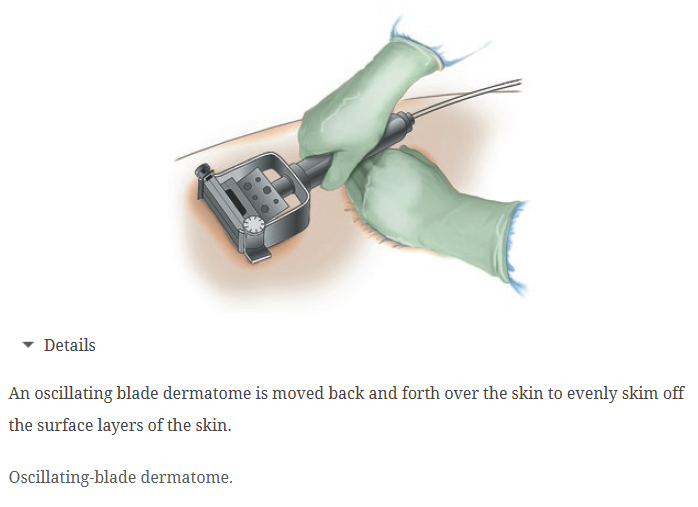
What is the most common type of powered dermatome?
a) Drum-type dermatome
b) Watson dermatome
c) Oscillating-blade dermatome
d) Reciprocating-blade dermatome
c) Oscillating-blade dermatome
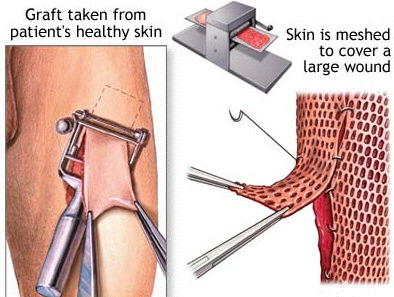
Which type of power source can drive an oscillating-blade dermatome?
a) Steam
b) Manual crank
c) Electricity or nitrogen
d) Compressed air only
c) Electricity or nitrogen
In an oscillating-blade dermatome, what determines the width of the skin graft?
a) Depth control lever
b) Guard size
c) The “gap” in the edge of the plate
d) Surgeon’s angle of incision
c) The “gap” in the edge of the plate
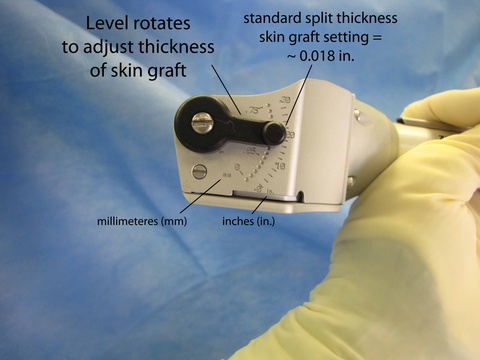
What may be used to lubricate the skin during use of the dermatome?
a) Saline
b) Iodine
c) Sterile mineral oil
d) Sterile water
c) Sterile mineral oil
What tool is suggested to stretch the skin during dermatome use if fingers slip on the lubricant?
a) Hemostat
b) Kelly clamp
c) Sterile tongue blade
d) Penrose drain
c) Sterile tongue blade
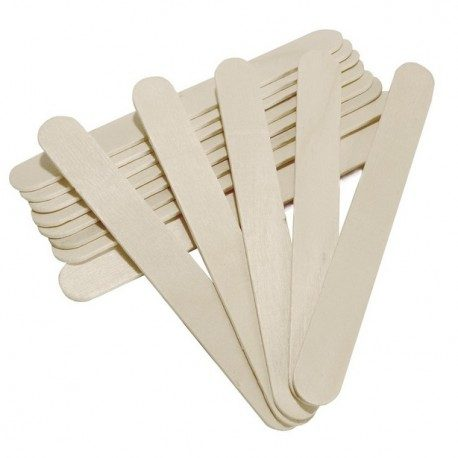
What is a key feature of Padgett and Reese dermatomes?
a) Powered by electricity
b) Require CO₂ cartridges
c) Hand-operated drum-type dermatomes
d) Used only in eye surgery
c) Hand-operated drum-type dermatomes
Padgett and Reese dermatomes are manually powered rather than electric or pneumatic.
Drum-type: These dermatomes have a cylindrical cutting mechanism (like a drum) that rotates as it's moved across the donor site to shave thin layers of skin for grafting.
Hand-operated: Unlike air- or motor-powered dermatomes, Padgett and Reese models require manual control, offering precise depth and direction—especially useful for small or delicate graft areas.
They are typically used for smaller skin grafts and are valued for their simplicity and control.
Which dermatome is used to obtain freehand skin grafts with the depth controlled by the surgeon?
a) Watson knife dermatome
b) Weck-Cel dermatome
c) Ferris-Smith dermatome
d) Padgett drum dermatome
c) Ferris-Smith dermatome
Which dermatome has an adjustable roller to control graft thickness?
a) Watson knife
b) Weck-Cel
c) Ferris-Smith
d) Padgett
a) Watson knife
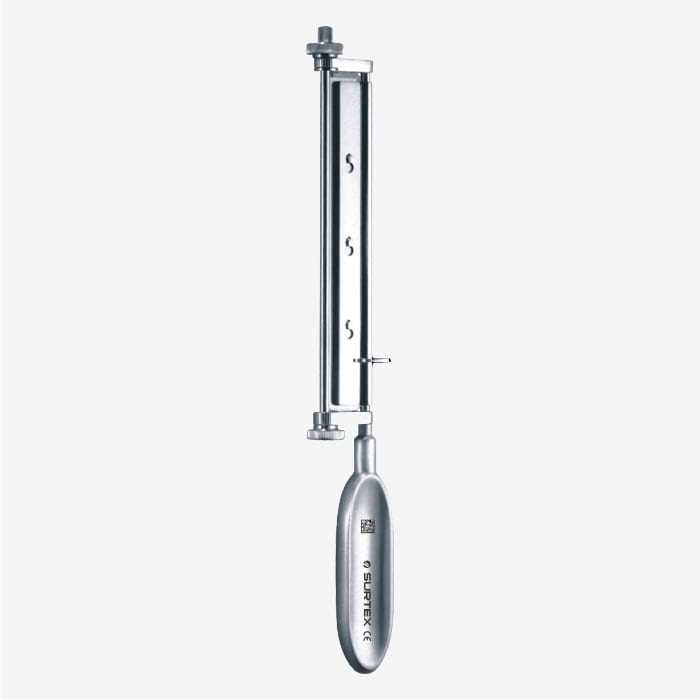
What kind of blade does the Weck-Cel dermatome use?
a) Curved scalpel blade
b) Drum blade
c) Straight razor blade
d) Electric oscillating blade
c) Straight razor blade
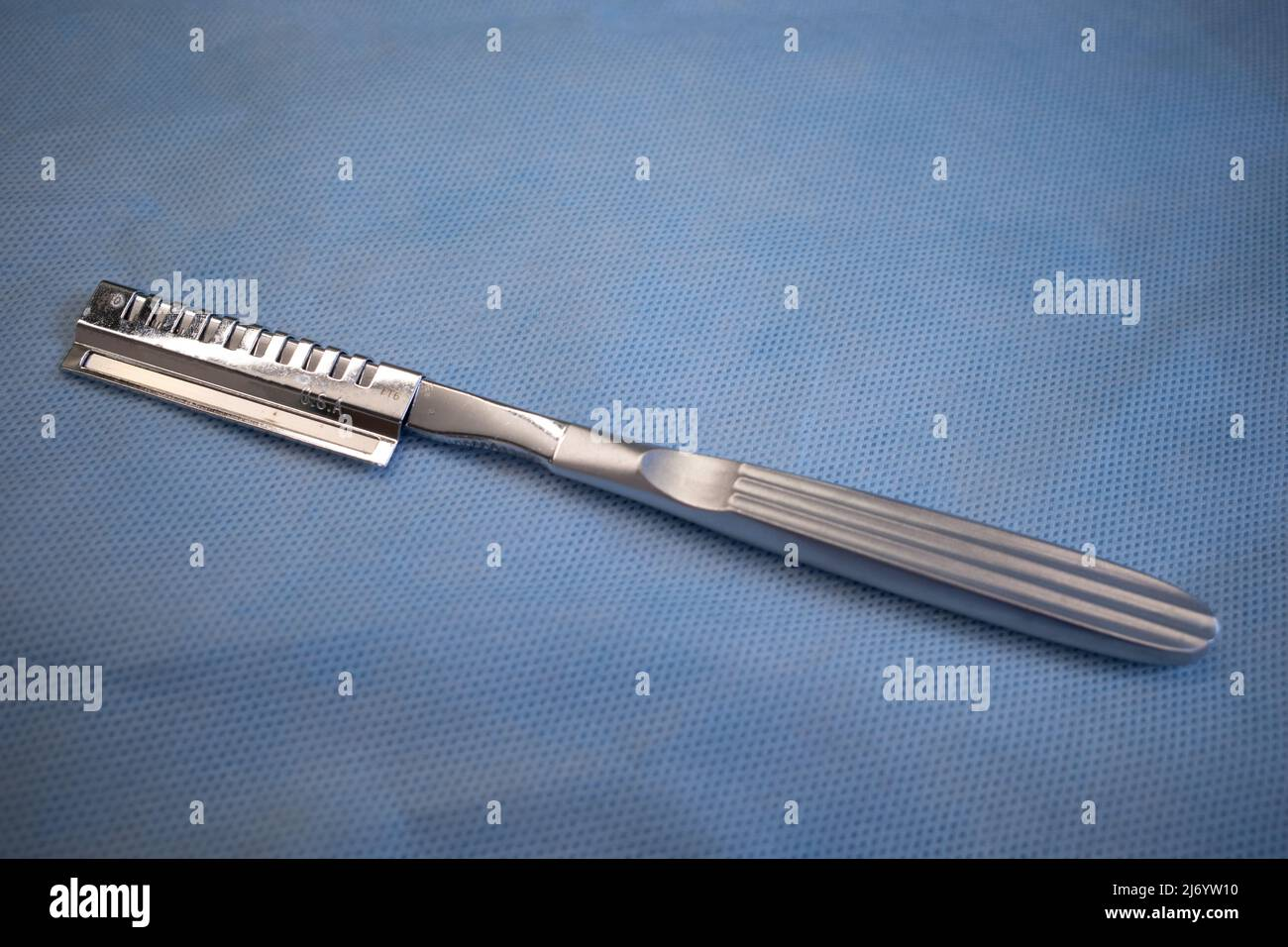
Which dermatome is used for small skin grafts and burn debridement?
a) Watson knife
b) Padgett dermatome
c) Ferris-Smith
d) Weck-Cel knife
d) Weck-Cel knife
What is the purpose of a mesh graft device?
a) To clean and sterilize grafts
b) To slice deeper grafts
c) To expand the size of a skin graft
d) To apply medication to grafts
c) To expand the size of a skin graft
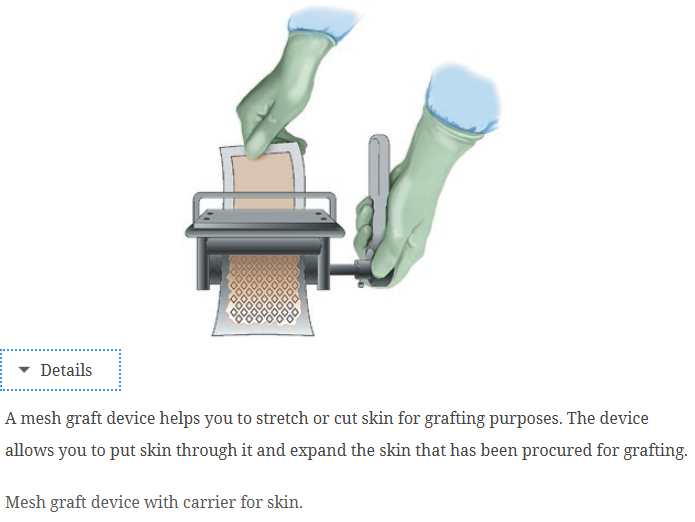
What is a derma-carrier used for in skin grafting?
a) To carry instruments
b) To secure the graft to bone
c) To keep the graft flat and allow it to pass through the mesh graft device
d) To dry the graft before application
c) To keep the graft flat and allow it to pass through the mesh graft device
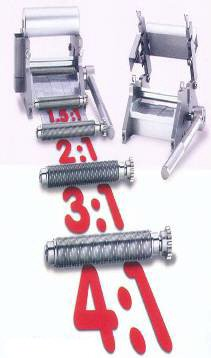
How is a derma-carrier designed?
a) With grooves and suction
b) One smooth side and one ridged side
c) All smooth surface
d) With Velcro straps
b) One smooth side and one ridged side
What must be done before placing the blade in an oscillating-blade dermatome?
a) Soak the blade in mineral oil
b) Connect the power source
c) Ensure the power is disconnected
d) Turn the device on to test rotation
c) Ensure the power is disconnected
Why should the power (electrical, air, or nitrogen) be disconnected when placing the blade in an oscillating-blade dermatome?
a) To avoid electricity waste
b) To clean the unit before use
c) To prevent accidental activation
d) To allow full range of blade motion
c) To prevent accidental activation and severe injury
When handling a drum-type dermatome, how should the blade carrier be managed?
a) Allow it to rotate freely
b) Clamp it with a towel clip
c) Hold the blade carrier firmly
d) Disconnect the drum from the handle
c) Hold the blade carrier firmly
“When handling a drum-type dermatome, always hold the blade carrier to prevent it from swinging around the drum and causing a severe injury.”
What is the primary danger if the blade carrier swings freely around a drum-type dermatome?
a) Delayed skin grafting
b) Blade dulling
c) Device malfunction
d) Severe injury
d) Severe injury
What is an autograft?
a) A graft taken from a cadaver
b) A graft taken from a different species
c) A graft taken from the same individual
d) A graft taken from synthetic material
c) A graft taken from the same individual
What is an allograft?
a) A graft from one’s own body
b) A graft from a different species
c) A graft from the same species, such as a cadaver
d) A synthetic tissue substitute
c) A graft from the same species, such as a cadaver
What term describes a skin graft obtained from a dissimilar species?
a) Autograft
b) Allograft
c) Homograft
d) Xenograft
d) Xenograft
What is the abbreviation for a split-thickness skin graft?
a) STSG
b) FTSG
c) SFTG
d) TSSG
a) STSG
What is included in a full-thickness skin graft (FTSG)?
a) Epidermis only
b) Dermis only
c) Epidermis and part of the dermis
d) Epidermis and all of the dermis
d) Epidermis and all of the dermis
Why is the use of full-thickness skin grafts (FTSG) restricted to small defects?
a) They are difficult to sterilize
b) They do not heal well over large areas
c) They require less vascularization
d) The dermis is too thin for larger grafts
b) They do not heal well over large areas
What type of skin condition may require coverage with a full-thickness skin graft (FTSG)?
a) First-degree burn
b) Eczema
c) Squamous cell carcinoma excision
d) Psoriasis
c) Squamous cell carcinoma excision
What type of skin graft is obtained using a dermatome?
a) Full-thickness skin graft (FTSG)
b) Split-thickness skin graft (STSG)
c) Composite graft
d) Autograft from cartilage
b) Split-thickness skin graft (STSG)
What layers of the skin are removed in a split-thickness skin graft (STSG)?
a) Epidermis only
b) Epidermis and all of the dermis
c) Epidermis and approximately half of the dermis
d) Dermis and subcutaneous tissue
c) Epidermis and approximately half of the dermis
In which of the following situations is an STSG typically used?
a) Skin cancer excision
b) Treatment of eczema
c) Coverage of small lacerations
d) Coverage of large surface areas
d) Coverage of large surface areas, such as burns
Which of the following factors influences the surgeon’s choice of donor site for an STSG?
a) Patient’s insurance provider
b) Type of anesthesia used
c) Age, sex, and general health of the patient
d) The room temperature during surgery
c) Age, sex, and general health of the patient
Which is not a factor the surgeon considers when selecting a skin graft donor site?
a) Location of the wound
b) Size of the wound
c) Patient's ethnicity
d) Condition of potential donor sites
c) Patient's ethnicity
Which of the following is an ideal donor site for an STSG?
a) Palms
b) Scalp
c) Abdomen
d) Knees
c) Abdomen
Which of the following is an ideal donor site for skin grafting?
a) Elbow
b) Chest
c) Scalp
d) Heel
b) Chest
The surgeon’s preference of the donor site is influenced by many factors, including the following:
Age, sex, and general health of the patient
Location of the wound to be grafted
Size of surface area to be covered
Condition of potential donor sites
Ideal donor sites include:
Abdomen
Back
Chest, and
Lateral and ventral aspects of the thighs
Which of the following donor site types does not heal on its own and must be sutured for primary healing?
a) Partial-thickness skin graft
b) Full-thickness skin graft
c) Split-thickness skin graft
d) Xenograft
b) Full-thickness skin graft
Which type of skin graft donor site is dressed and allowed to heal naturally because epithelial cells grow from the remaining dermis?
a) Autograft
b) Full-thickness skin graft
c) Composite graft
d) Split-thickness skin graft
d) Split-thickness skin graft
Which part of the thigh is considered an ideal donor site for an STSG?
a) Posterior aspect
b) Medial aspect
c) Lateral and ventral aspects
d) Dorsal aspect
c) Lateral and ventral aspects
(Front and Outer Thigh)
What is the largest organ of the human body?
a) Liver
b) Brain
c) Skin
d) Lungs
c) Skin
When the skin is compromised, what is primarily threatened?
a) Immune response
b) Circulatory system
c) Homeostasis
d) Skeletal alignment
c) Homeostasis
When the skin is damaged, it disrupts this barrier, allowing:
Heat and moisture to escape → leading to dehydration and temperature dysregulation
Pathogens to enter → which then triggers the immune response
So, while the immune system is activated as a consequence, the initial and primary threat is to homeostasis, because the skin acts as the first line of defense in maintaining the internal balance of the body.
Which of the following is not a function of the skin?
a) Synthesis of vitamin D
b) Protection from UV rays
c) Production of insulin
d) Regulation of body temperature
c) Production of insulin
How does the skin help regulate body temperature?
a) Through the liver's bile production
b) Through sweat glands and blood flow
c) By producing white blood cells
d) By generating electrical impulses
b) Through sweat glands and blood flow
Which of the following skin functions helps in preventing dehydration?
a) Temperature regulation
b) Sensory input
c) Preservation of fluid balance
d) Waste excretion
c) Preservation of fluid balance
Which function of the skin allows it to serve as the first line of defense?
a) Production of melanin
b) Epidermal barrier
c) Hair follicle growth
d) Vitamin A absorption
b) Epidermal barrier
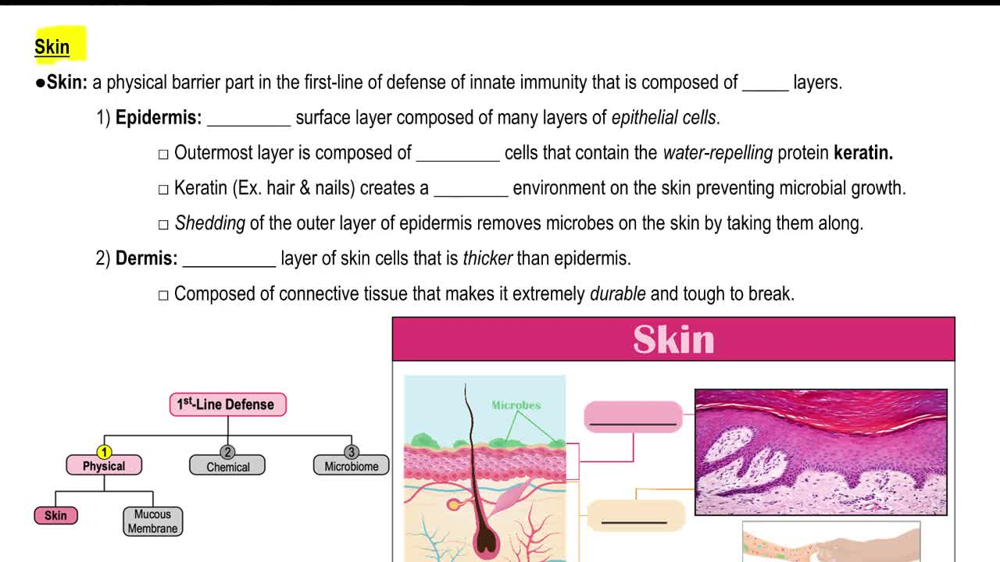
How does the skin contribute to waste removal?
a) Through respiration
b) Through the urinary tract
c) Through sweat
d) Through the lymphatic system
c) Through sweat
What receptors in the skin allow for sensory input?
a) Thermoreceptors and mechanoreceptors
b) Baroreceptors
c) Chemoreceptors
d) Photoreceptors
a) Thermoreceptors and mechanoreceptors
Which vitamin is synthesized by the skin in response to sunlight?
a) Vitamin A
b) Vitamin B12
c) Vitamin C
d) Vitamin D
d) Vitamin D
What are the two main layers of the integumentary system?
a) Epidermis and hypodermis
b) Epidermis and dermis
c) Dermis and endodermis
d) Epidermis and fascia
b) Epidermis and dermis
Which layer of skin contains no blood vessels or nerves?
a) Dermis
b) Subcutaneous layer
c) Epidermis
d) Hypodermis
c) Epidermis
What is the innermost layer of the epidermis?
a) Stratum lucidum
b) Stratum granulosum
c) Stratum corneum
d) Stratum basale
d) Stratum basale
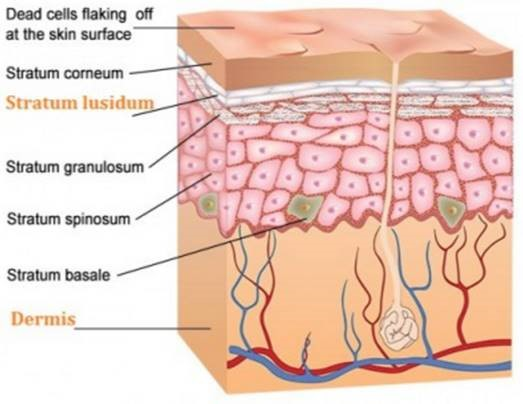
In which layer is melanin produced?
a) Stratum spinosum
b) Stratum granulosum
c) Stratum basale
d) Stratum corneum
c) Stratum basale
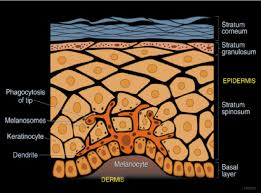
Which layer of the epidermis contains cells with a spiny or prickly appearance?
a) Stratum granulosum
b) Stratum spinosum
c) Stratum lucidum
d) Stratum corneum
b) Stratum spinosum
Keratinization begins in which layer of the epidermis?
a) Stratum basale
b) Stratum spinosum
c) Stratum granulosum
d) Stratum corneum
c) Stratum granulosum
The stratum granulosum is a layer of the epidermis characterized by keratinization, where keratinocytes accumulate keratohyalin granules. This process is crucial for forming a waterproof barrier to prevent fluid loss. The cells in this layer flatten, lose their nuclei, and begin to die as they move towards the outer layers of the skin.
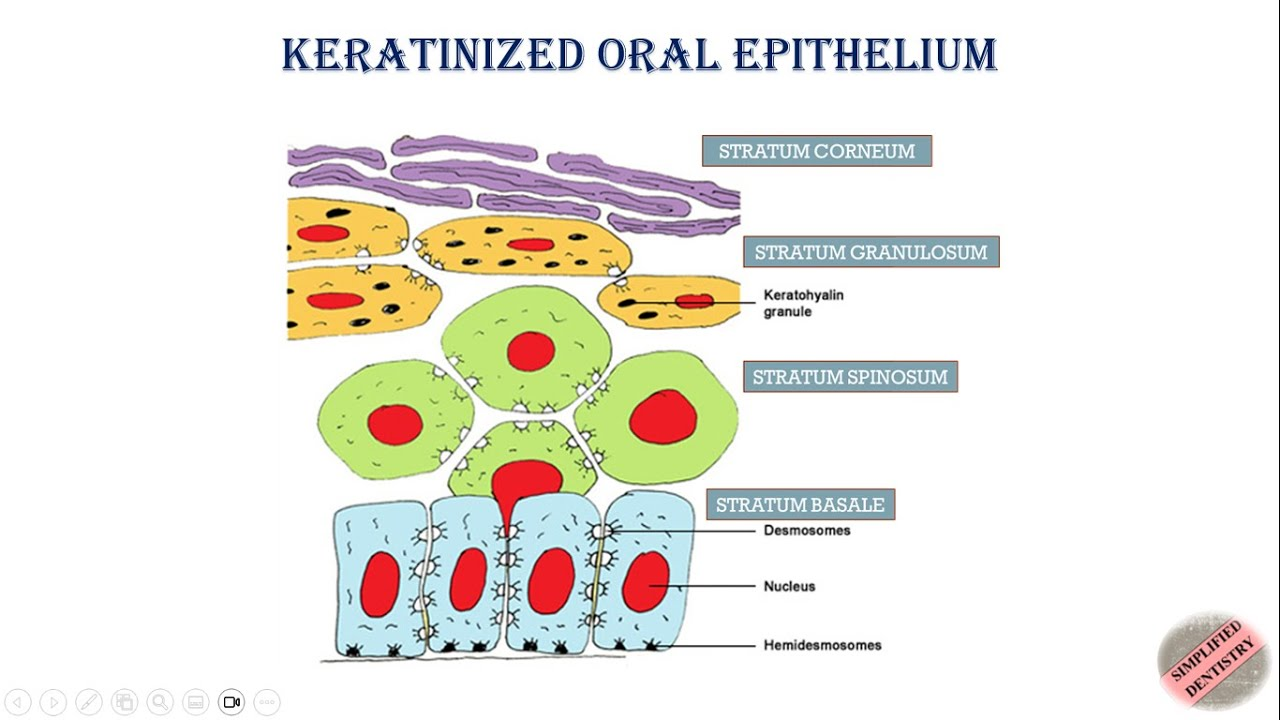
Which epidermal layer is found only on the palms of the hands and soles of the feet?
a) Stratum corneum
b) Stratum granulosum
c) Stratum lucidum
d) Stratum spinosum
c) Stratum lucidum
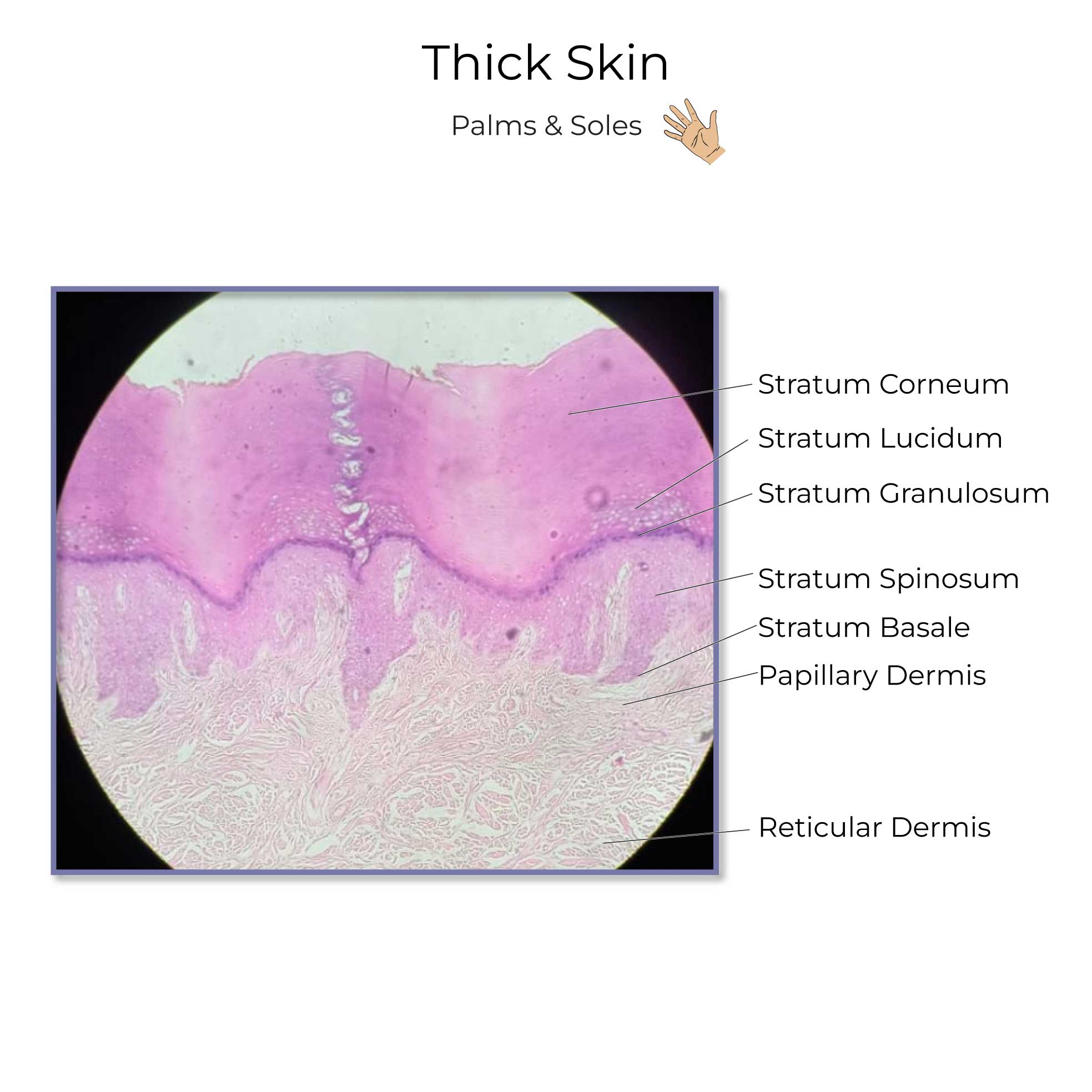
Which layer of the epidermis contains up to 20 layers of disintegrating cells?
a) Stratum granulosum
b) Stratum spinosum
c) Stratum corneum
d) Stratum lucidum
c) Stratum corneum
What protein is responsible for the waterproof quality of the skin, as well as the strength of hair and nails?
a) Collagen
b) Elastin
c) Keratin
d) Melanin
c) Keratin
As cells move toward the surface of the skin, what happens to them in the stratum corneum?
a) They begin mitosis
b) They flatten and start to divide
c) They dry out, keratin remains, and they are eventually sloughed
d) They gain pigment and multiply
c) They dry out, keratin remains, and they are eventually sloughed
Approximately how long does it take for the epidermis to complete the cycle of shedding and renewal?
a) 1 week
b) 3 weeks
c) 5 weeks
d) 8 weeks
c) 5 weeks
Which layer of the skin contains nerves, blood vessels, hair follicles, and glands?
a) Epidermis
b) Dermis
c) Hypodermis
d) Stratum lucidum
b) Dermis
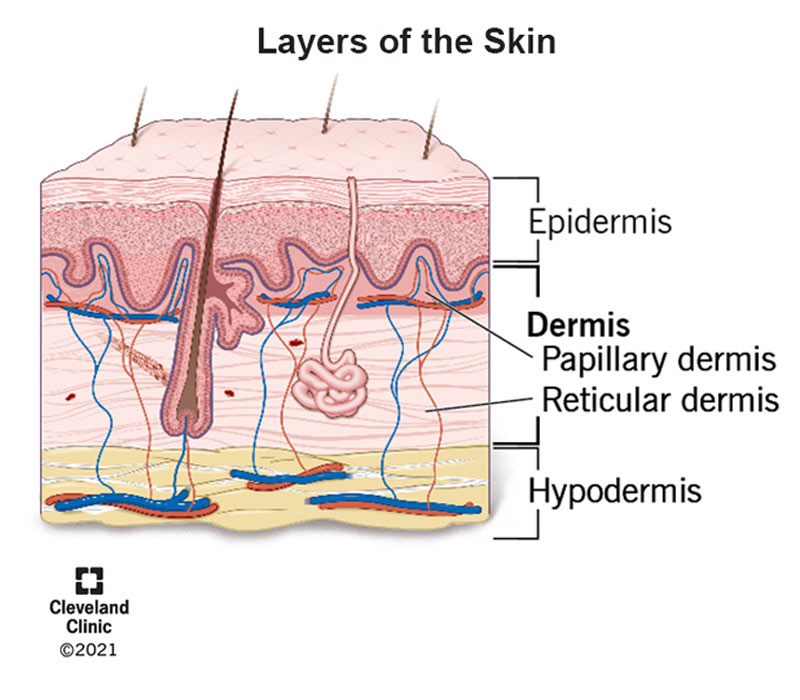
What are the two layers of the dermis?
a) Epidermis and dermis
b) Reticular and papillary
c) Basale and spinosum
d) Corneum and lucidum
b) Reticular and papillary
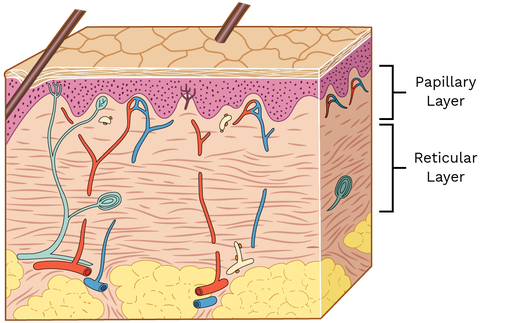
Which layer of the dermis contains papillae that form fingerprints?
a) Reticular layer
b) Papillary layer
c) Stratum corneum
d) Stratum basale
b) Papillary layer
Papillary layer: This layer is named for its papilla, or projections that are the groundwork for fingerprints.
What protein provides strength in the reticular layer of the dermis?
a) Keratin
b) Melanin
c) Collagen
d) Elastin
c) Collagen
Reticular layer: This is the thick, deep layer that provides collagen for strength and elastin for pliability of the skin.
The subcutaneous layer is also known as the:
a) Epidermis
b) Dermis
c) Stratum basale
d) Hypodermis
d) Hypodermis
What is the primary function of the hypodermis?
a) Vitamin D synthesis
b) Protection from UV light
c) Anchoring the skin and insulation
d) Sweating and cooling
c) Anchoring the skin and insulation
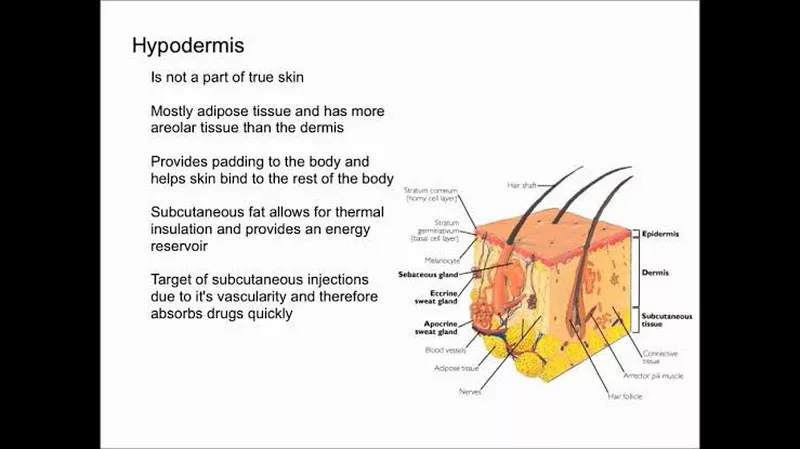
Where are hair, nails, and most glands embedded?
a) Epidermis
b) Papillary layer
c) Reticular layer
d) Subcutaneous tissue
c) Reticular layer
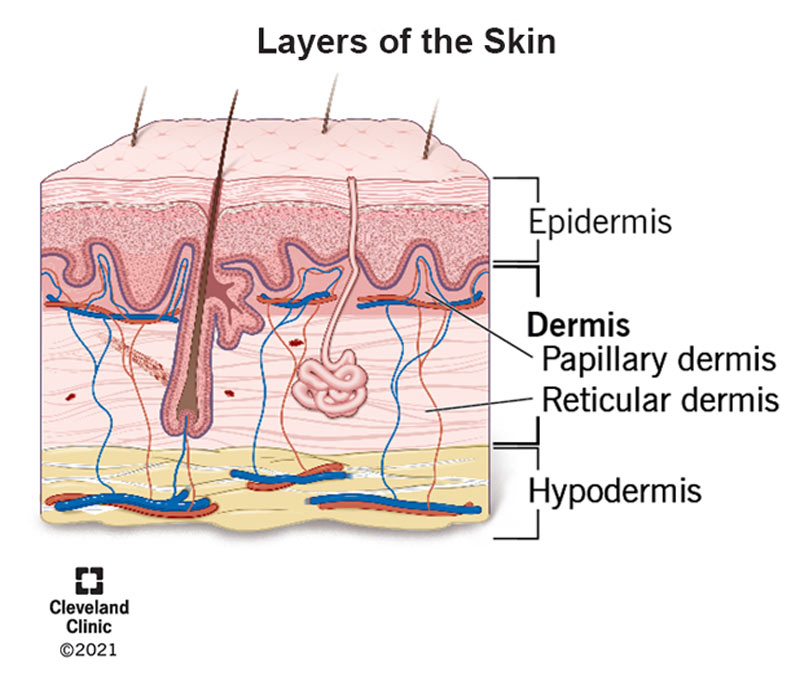
Accessory structures like hair and nails are derived from which epidermal layer?
a) Stratum corneum
b) Stratum spinosum
c) Stratum granulosum
d) Stratum basale
d) Stratum basale
The epidermis consists of which of the following strata?
a) Stratum basale, stratum spinosum, stratum granulosum, stratum lucidum, stratum corneum
b) Stratum basale, stratum reticularis, stratum papillae
c) Stratum corneum, stratum dermis, stratum hypodermis
d) Stratum granulosum, stratum epidermis, stratum dermis
a) Stratum basale, stratum spinosum, stratum granulosum, stratum lucidum, stratum corneum
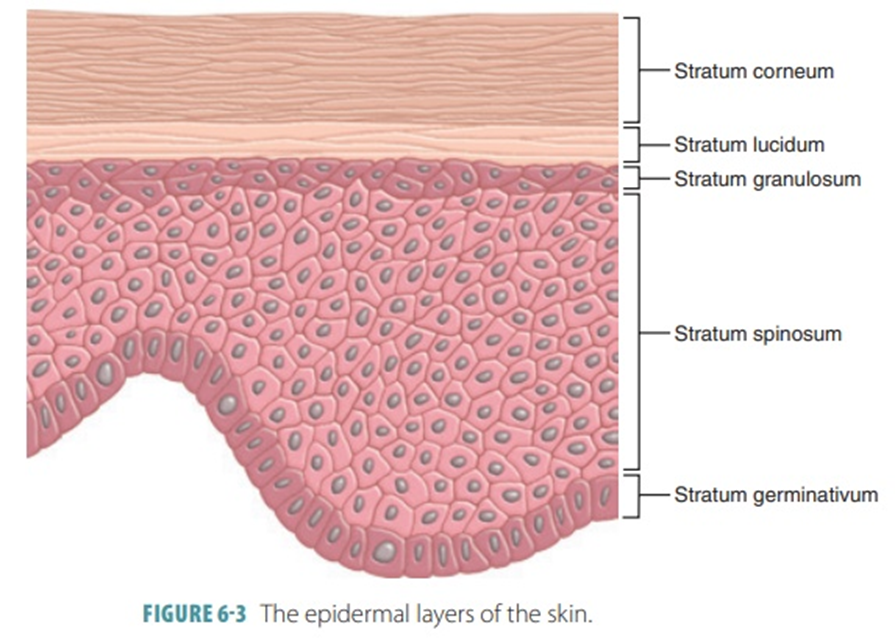
The stratum germinativum is another name for the stratum basale. Both terms refer to the deepest layer of the epidermis where cells constantly divide (mitosis) to produce new skin cells. So, germinativum = basal layer in the epidermis.
Which type of sweat gland is distributed across most of the body and secretes mostly water and salts?
a) Apocrine
b) Ceruminous
c) Merocrine
d) Sebaceous
c) Merocrine or Eccrine
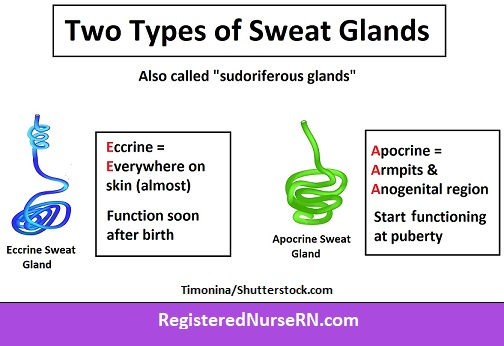
What stimulates merocrine glands to produce sweat?
a) Infection
b) Sexual activity
c) Pain and arousal
d) Heat and emotional stress
d) Heat and emotional stress
When do apocrine glands become active?
a) At birth
b) During infancy
c) At puberty
d) During menopause
c) At puberty
Which of the following stimulates apocrine gland activity?
a) Cold temperatures
b) Digestion
c) Pain, emotional stress, and sexual arousal
d) Exposure to sunlight
c) Pain, emotional stress, and sexual arousal
Where are apocrine sweat glands located?
a) Palms and soles
b) Abdomen and chest
c) Axillae and external genitalia
d) Back and thighs
c) Axillae and external genitalia
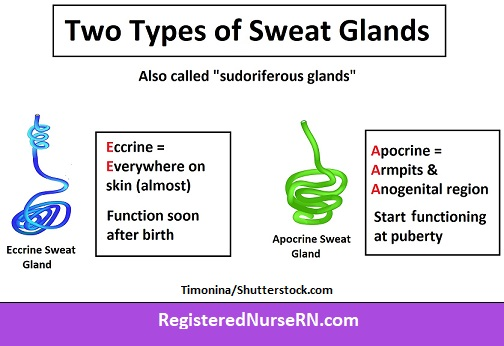
What do apocrine sweat glands secrete in addition to water and salts?
a) Melanin and enzymes
b) Lipids and hormones
c) Proteins and fatty acids
d) Collagen and keratin
c) Proteins and fatty acids
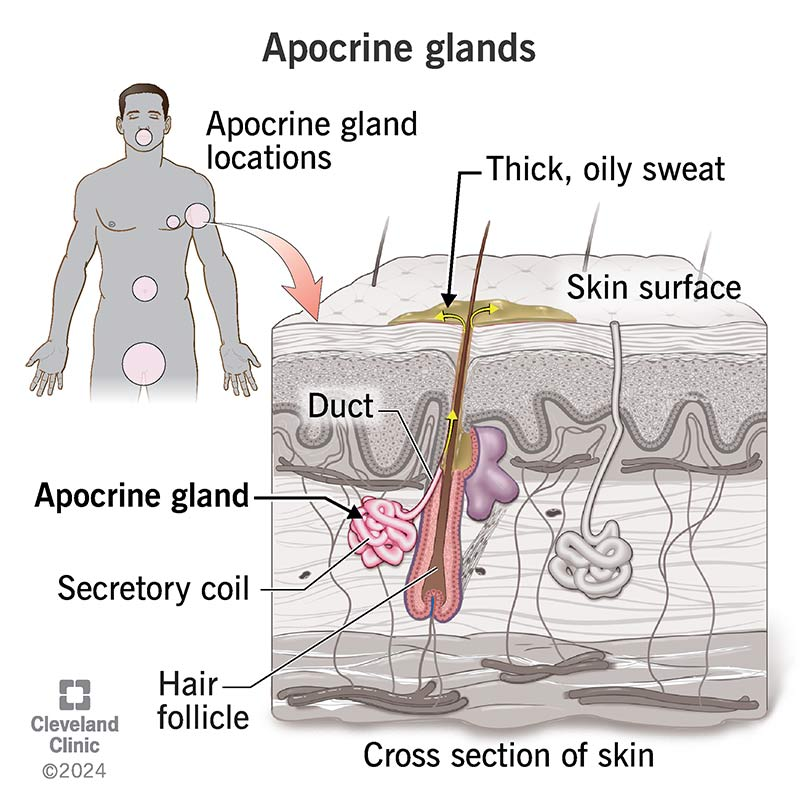
Ceruminous glands are located in the:
a) Nasal cavity
b) External auditory canal
c) Underarms
d) Eyelids
b) External auditory canal
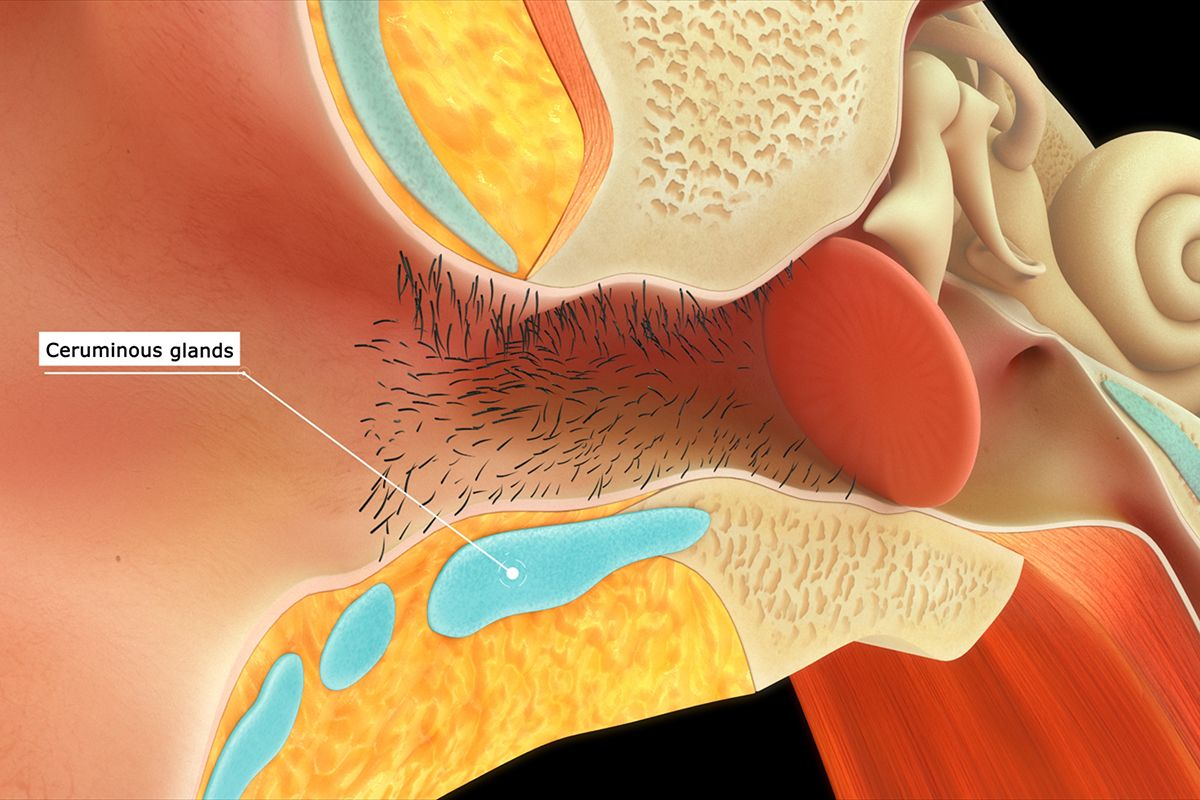
Cerumen is also known as:
a) Perspiration
b) Skin oil
c) Mucus
d) Earwax
d) Earwax
Which of the following can cause a burn?
a) Radiation
b) Chemicals
c) Electricity
d) All of the above
d) All of the above
Which degree of burn affects only the epidermis and presents with redness but no blisters?
a) First-degree
b) Second-degree
c) Third-degree
d) Fourth-degree
a) First-degree
What is the expected healing time for a first-degree burn?
a) A few hours
b) About 1 week
c) 2–3 weeks
d) 4 weeks or longer
b) About 1 week
Which type of burn is characterized by blistering and extreme pain?
a) First-degree
b) Second-degree
c) Third-degree
d) Fourth-degree
b) Second-degree
Superficial second-degree burns that do not leave a scar typically heal within:
a) 3–5 days
b) 1 week
c) 2 weeks
d) 4 weeks
c) 2 weeks
Deep second-degree burns with delayed healing may require which of the following?
a) Topical antibiotics only
b) Pressure dressings
c) Debridement and grafting
d) Amputation
c) Debridement and grafting
Third-degree burns are characterized by:
a) Mild erythema and dryness
b) Blisters with clear fluid
c) Full-thickness skin destruction and eschar
d) Bone and muscle exposure
c) Full-thickness skin destruction and eschar
What is “eschar”?
a) Fluid-filled blister
b) Redness due to inflammation
c) White or charred dead tissue from third-degree burns
d) Thin scab of dried serum
c) White or charred dead tissue from third-degree burns
What type of burn only affects the epidermis?
a) Second-degree
b) First-degree
c) Third-degree
d) Fourth-degree
b) First-degree
What type of burn takes significantly longer to heal and often leaves a hypertrophic scar?
a) First-degree
b) Third-degree
c) Second-degree
d) Fourth-degree
c) Second-degree
What type of burn completely penetrates the full thickness of the skin and often affects the underlying structures, causing permanent tissue damage?
a) First-degree
b) Second-degree
c) Third-degree
d) Fourth-degree
c) Third-degree
Why might third-degree burns be painless?
a) They heal very quickly
b) Blisters relieve pressure
c) Nerve endings may be destroyed
d) The dermis is unaffected
c) Nerve endings may be destroyed
Which of the following is not a typical treatment for severe third-degree burns?
a) Topical creams only
b) Fluid resuscitation
c) Respiratory support
d) Skin grafting
a) Topical creams only
Fourth-degree burns affect all of the following except:
a) Muscle
b) Tendons
c) Bone
d) Sebaceous glands only
d) Sebaceous glands only
Which type of burn causes permanent tissue damage?
a) First-degree
b) Second-degree
c) Third-degree
d) Fourth-degree
c) Third-degree
What type of burn could affect bone density?
a) First-degree
b) Second-degree
c) Third-degree
d) Fourth-degree
d) Fourth-degree